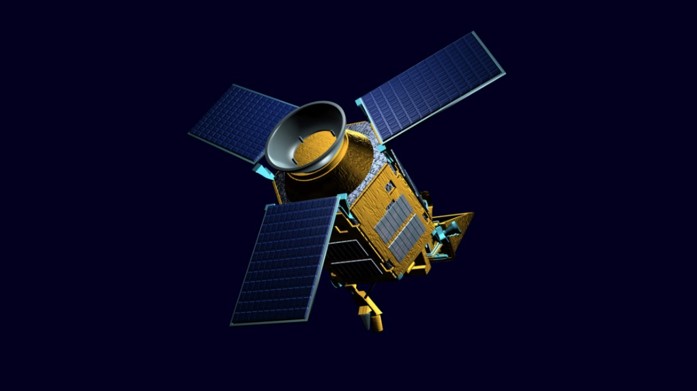NCEO welcomes the successful launch today of the first air-quality monitoring satellite of the Copernicus Programme, Sentinel-5P. Sentinel-5P is a European satellite which has been supported by UK science and technical expertise from its inception a decade ago. NCEO staff and colleagues at University of Leicester, STFC RAL are part of the mission teams.
The data collected by Sentinel-5P will greatly improve our ability to monitor air pollutants from space, essential for human health and understanding climate change. The instrument on the satellite, integrated with its platform by Airbus in Stevenage will measure a large number of pollutants globally, every day, in much finer detail than before and give us the ability to determine the extent of urban hotspots of pollution. Air quality is a significant focus for environmental science research.
Witnessing the event from the ESA ESTEC centre in Noordwijk, Netherlands, NCEO’s Director, Professor John Remedios said “It is a huge pleasure to see this satellite successfully being launched, having been part of the team that recognised the needs for these new observations of the atmosphere and mapped these to specify the instrument we see today. Sentinel-5P and successor satellites will give the public a consistent measure of the quality of our atmosphere over the next decades and monitor the success of the really significant steps society wants to take towards a healthier lifestyle and clean economy. Sentinel-5P could not be more timely.”
Also particularly noteworthy is the improvement Sentinel-5P will make to monitoring methane from space using shortwave infrared instrumentation built by SSTL. Methane is the second most important anthropogenic greenhouse gas with a global warming potential 28 times as strong as carbon dioxide over a 100-year timescale. But our current knowledge of methane emission sources is surprisingly poor.
“Sentinel-5P will map methane in unprecedented detail, enabling us to make a big step forward in quantifying methane emission sources using space data, supporting efforts to reduce greenhouse gas emissions,” says Professor Hartmut Boesch, NCEO co-director based at the University of Leicester.
UK Scientific Contributions
The Sentinel-5 Precursor is part of the global monitoring programme for environment and security (Copernicus). Scientists at NCEO and the University of Leicester worked with SSTL through funding from the Centre for Earth Observation Instrumentation to provide instrument specifications for shortwave infra-red channels of Sentinel-5P that underpinned the UK build of these channels on the satellite.
Staff at STFC Rutherford Appleton Laboratory and NCEO are supporting the data processing activities for Sentinel-5P. Scientists from the University of Leicester and NCEO are part of the calibration and validation team for Sentinel-5P looking at air quality data and methane. NCEO scientists will be part of the science community using the data to map out key pollutants that are harmful to human health and contribute to climate change, particularly in megacities. University of Leicester scientists will be studying air quality in the UK and abroad.
The Sentinel-5P mission will be the main mission for atmospheric trace gas data for the Copernicus service before the Sentinel-5 instrument becomes operational in 2022. The wealth of satellite data will be transformed into value-added information by the Copernicus Atmosphere Monitoring (CAMS) Service supporting a wide range of applications in different domains including health, environmental monitoring, renewables energies, meteorology, and climatology. NCEO scientists are working with colleagues across Europe and with CAMS to make best use of the information from the satellite.
